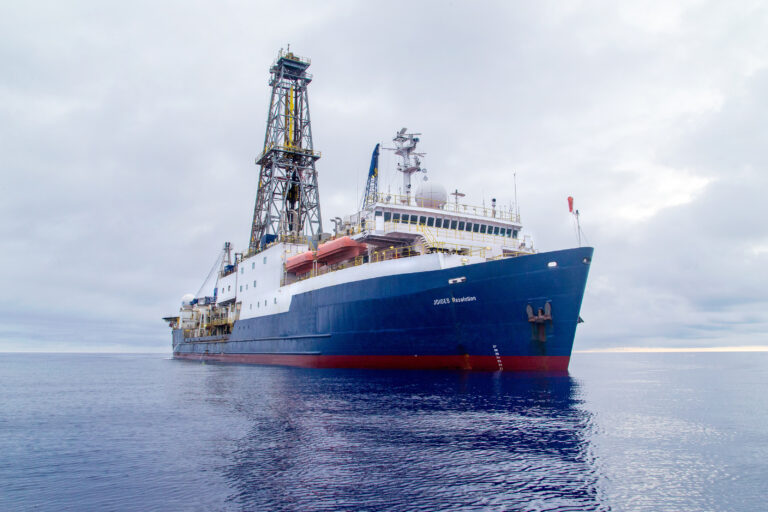In order to gain a better insight into the history of the formation of the Atlantic Ocean, an international team of scientists intends to collect extensive sample material by drilling off the coast of Norway with the research vessel Joides Resolution this summer.
The expedition is funded by the Integrated Ocean Discovery Program (IODP) and is jointly led by professor Sverre Planke from the University of Oslo and professor Christian Berndt from GEOMAR Helmholtz Centre for Ocean Research Kiel.
“The IODP expedition offers a unique opportunity to really understand how huge volcanic eruptions during the opening of the North Atlantic affected the climate at that time and what lessons we can learn for future climate change,” said Christian Berndt, co-chief scientist of the expedition from GEOMAR Helmholtz Centre for Ocean Research Kiel.
“Our hypothesis is that volcanic and magmatic activity was instrumental in triggering a 150,000-year extreme global warming event known as the Paleocene-Eocene Thermal Maximum. This global warming of 4-5°C may have been caused by the release of greenhouse gases from heated sediments off the coast of central Norway,” added Dr Morgan Jones from the University of Oslo.
The scientists intend to drill and to obtain sample material from the volcanic rocks that were formed at that time. A total of nine boreholes are planned at depths of up to 800m. The drilled material will then be analyzed geochemically and dated.
Berndt is convinced that in combination with the wealth of reflection seismic data collected by the oil industry over the past 40 years, the borehole information will provide an unprecedented picture of the formation of a large eruptive province during the opening of an ocean basin. A side aspect to be investigated, is the question how well these rock layers can be used to store carbon dioxide. If this can be done cost-effectively, it may help slow down today’s global warming.
The dimensions of the eruption at the time were huge. “We estimate this to be several million cubic kilometers of lava, enough to cover the whole area of Germany with five kilometers of lava,” explained Sverre Planke from the University of Oslo, co-chief scientist of the expedition. “As part of this IODP expedition, we would like to figure out why this volcanism was so anomalous. It is a unique opportunity for us to understand the formation of enormous volcanic eruptions from the Earth’s mantle and how such magmatism might have triggered global warming and mass extinctions in the past,” he concluded.
To read more about the project, visit the expedition page here.



